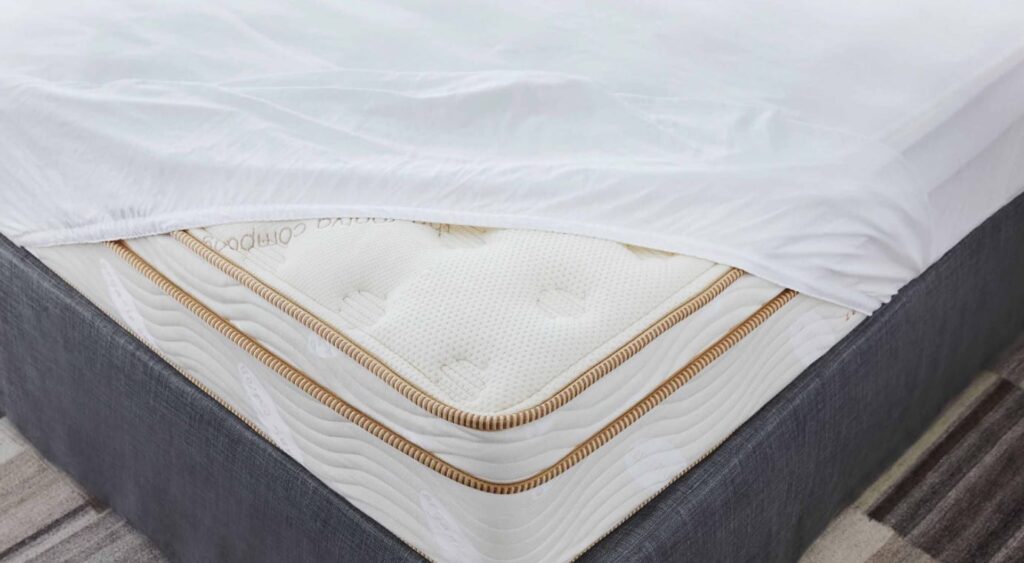Are you looking for the answer to the question, “Which side of your mattress protector should be up?” Well, you’ve come to the right place. In this article, we’ll explain the proper way to install a mattress protector so you can get the most out of it. We’ll also talk about why having a mattress protector is important and what types of mattress protectors are available to purchase. So, if you want to know the answer to “mattress protector which side up,” read on to find out!
What Is a Mattress Protector?
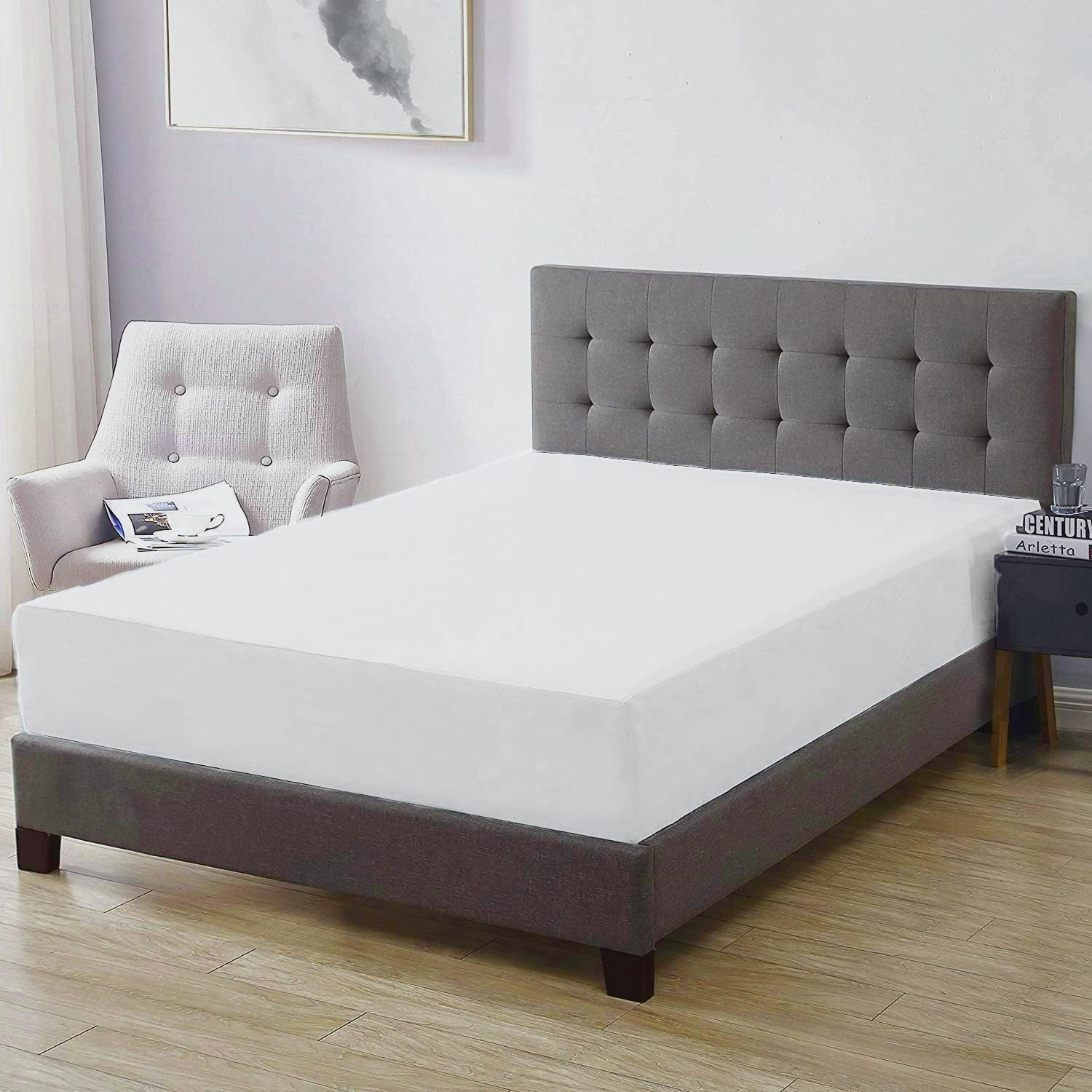
A mattress protector is a thin, waterproof cover that goes over your mattress to protect it from spills, dust, and other debris. It’s usually made of polyester, vinyl, or a combination of the two. It will usually come with a fitted sheet, or be designed to fit over a fitted sheet, and come with straps and/or zippers to ensure a snug fit. It is designed to be breathable and comfortable while still providing protection.
Most mattress protectors are machine washable, and they come in a variety of sizes to fit your mattress. They’re also relatively inexpensive and can be bought online or at many department stores.
Since mattress protectors are designed to fit snugly over your mattress, it’s important to know which side of the mattress protector should be up. The side with the zipper should be facing up, and the straps should be firmly secured around the mattress. If you have a zippered mattress protector, you should also make sure that the zipper is completely closed before putting it on the bed. For more detailed instructions on how to put on a zippered mattress protector, refer to the manufacturer’s instructions.
Benefits of Using a Mattress Protector
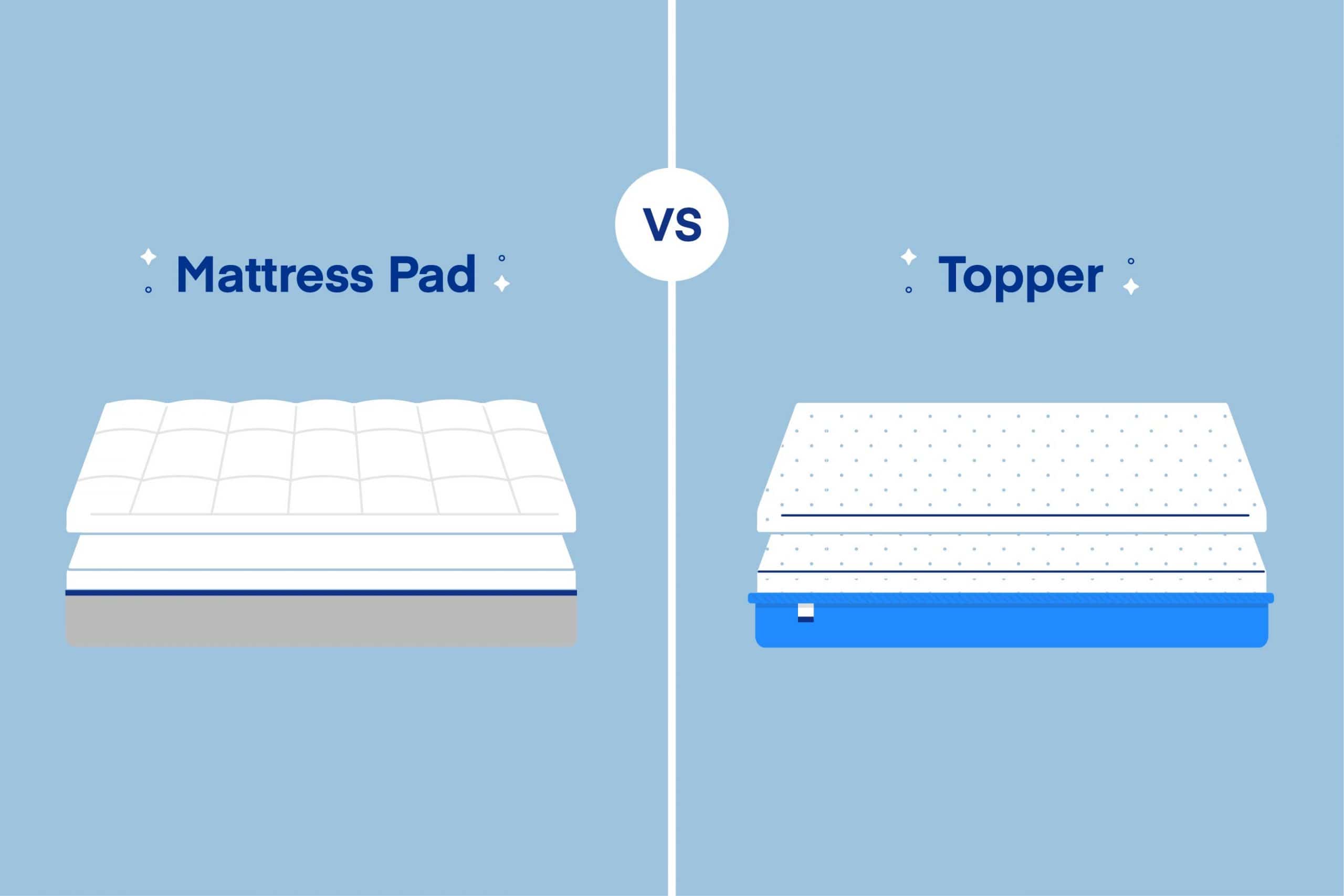
Protection from Dust Mites
Mattress protectors create a physical barrier between the mattress and the dust mites, preventing them from accessing the mattress. This can be particularly beneficial for people with allergies and asthma, as dust mites are one of the most common triggers for these conditions.
Keeps Mattress Clean and Sanitary
Mattress protectors provide an extra layer of protection from spills, sweat, and other liquids. This helps to keep the mattress clean and sanitary and prevents staining, which can reduce its lifespan.
Extends Mattress Lifespan
By providing extra protection from dust, dirt, and liquid, mattress protectors can help to extend the lifespan of the mattress. This is especially true for those made from high-quality materials, such as those made with breathable fabrics, which can also help to keep the mattress cool and comfortable.
Types of Mattress Protectors
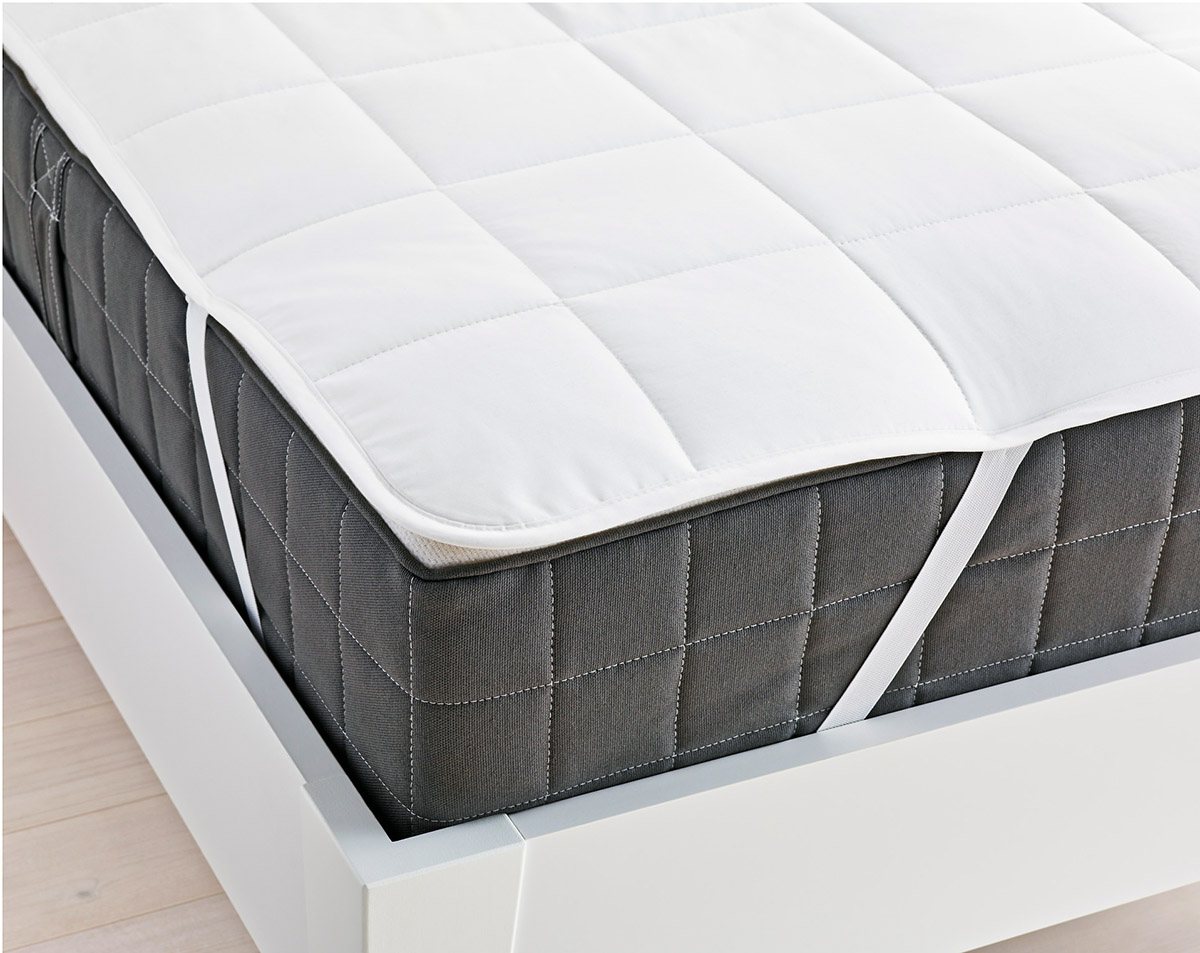
Zippered Mattress Protectors
Zippered mattress protectors are designed to enclose the entire mattress and protect it from allergens, dust mites, dirt, and moisture. They usually feature a zipper closure along one side, and can be secured with a padlock to prevent tampering. When using zippered mattress protectors, it is important that the zipper is facing up. This ensures that the mattress is completely sealed off, maximizing the protection.
Fitted Mattress Protectors
Fitted mattress protectors are made of stretchy fabric which fits snugly over the mattress. These protectors are typically held in place with elastic straps or a fitted sheet-style design, and they provide an effective barrier against dirt and moisture. As with zippered mattress protectors, it is important that the fitted protector is placed on the mattress with the elastic straps facing up. This will ensure a snug fit and optimum protection.
How to Put On a Zippered Mattress Protector
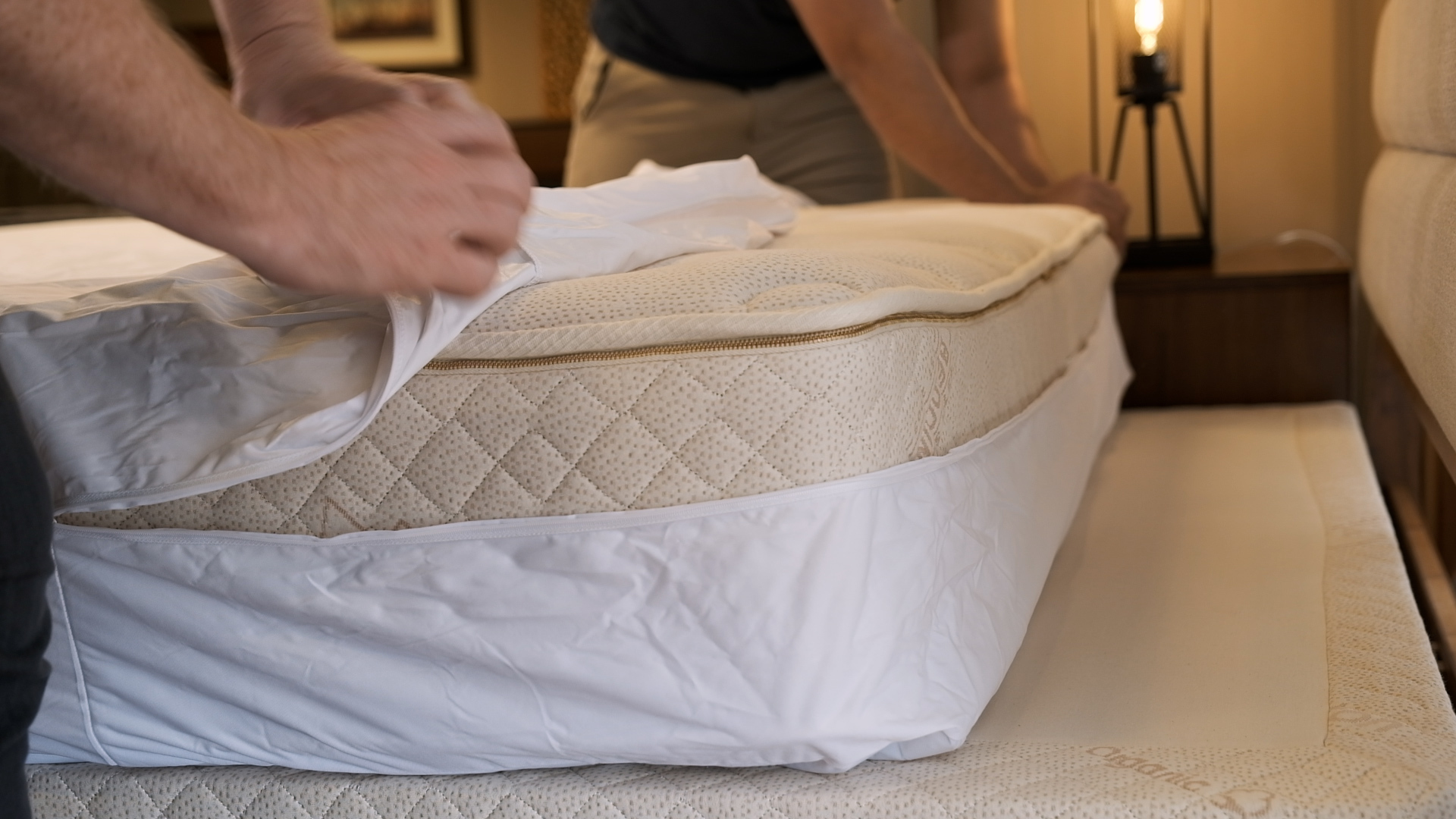
Preparation
Lay out mattress protector: Lay out the mattress protector on a flat surface. Make sure it is right side up, with the zipper facing up.
Steps
Put on the mattress protector: Place the mattress protector on the mattress and begin to zip it up. Make sure the zipper is fully closed and secure.
Check for a snug fit: Once the mattress protector is zipped up, make sure it fits snugly around the mattress. If it is too loose, it may not be able to protect the mattress from spills and accidents.
Secure the corners: Make sure the corners of the mattress protector are securely in place. This will ensure that it stays in place and fully protects the mattress.
Which Side of a Mattress Protector Should Be Up?
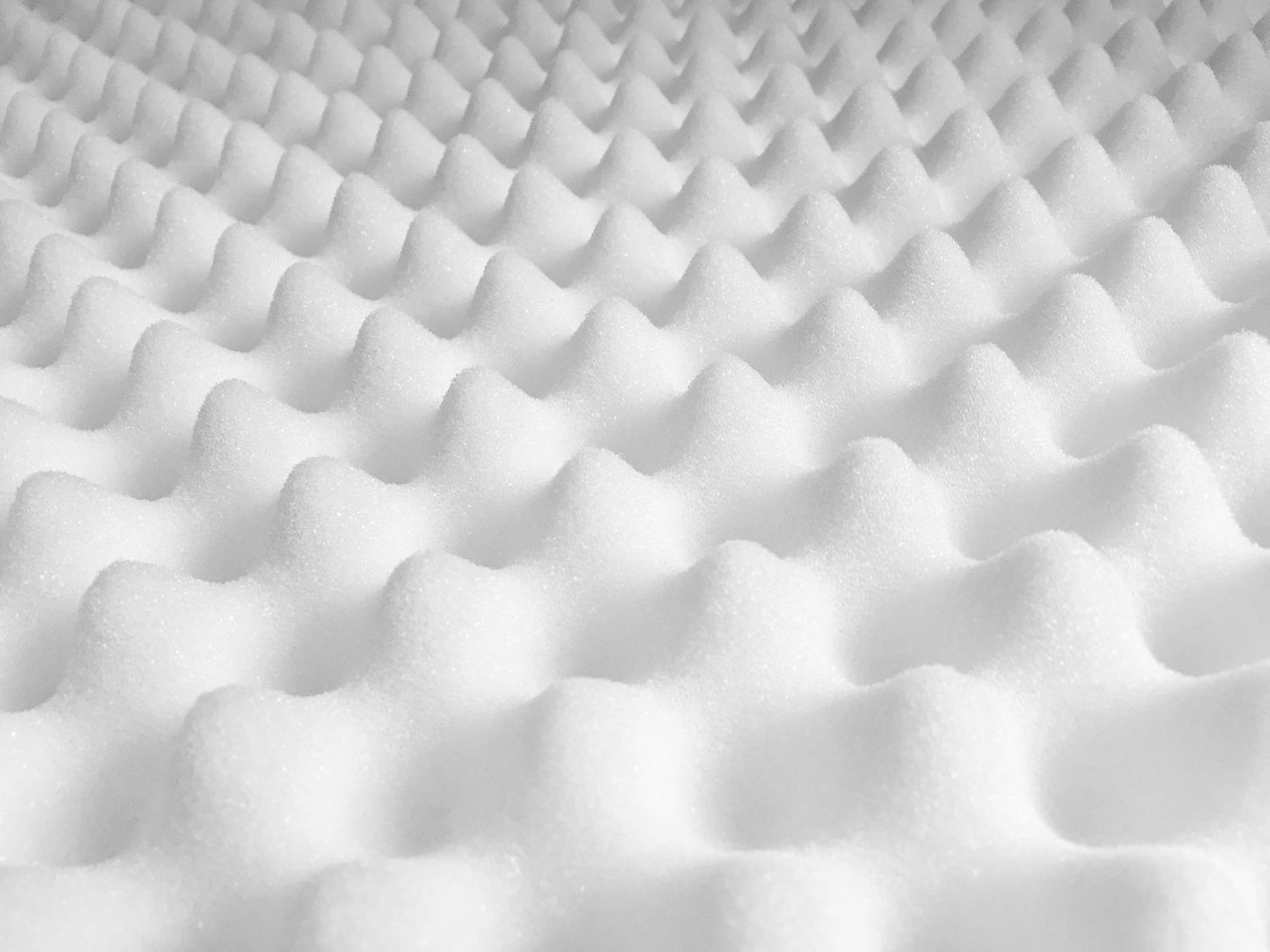
Knowing which side of a mattress protector should be up is essential for ensuring comfort and protection for the mattress. It is important to know the differences between the two sides of a mattress protector to ensure optimal performance.
Here are the differences between the two sides of a mattress protector:
- The top side should be placed against the mattress, as it has a waterproof film that protects the mattress from liquids and stains. It is also treated with a material that helps keep the mattress dry and cool.
- The bottom side should face the user, as it is made with a softer and more comfortable fabric. This side is also treated to resist odors and resist the growth of bacteria and mold.
It is important to note that the sides of a mattress protector should not be switched, as this can lead to poor performance of the protector. Additionally, it is important to clean the mattress protector regularly to maintain its effectiveness.
Caring for a Mattress Protector
Cleaning
A mattress protector should be washed on a regular basis. To clean a mattress protector, place it in a washing machine on a gentle cycle with cold water. Do not use bleach or fabric softener. After washing, hang the protector to dry or tumble dry on a low setting.
Storing
When not in use, store the mattress protector in a clean and dry environment. To store a mattress protector, fold it up and place it in a plastic bag or box.
Replacing
Mattress protectors should be replaced every few years or when they start to show signs of wear and tear.
Frequently Asked Questions
What are the Benefits of Using a Mattress Protector?
A mattress protector is a great investment for any mattress, as it can provide several benefits.
- It can help extend the life of your mattress, protecting it from spills and stains.
- It can provide additional comfort and cushioning, making it more comfortable to sleep on.
- It is an easy way to reduce allergens and dust mites, as most mattress protectors are designed with hypoallergenic materials.
- It can provide a barrier against bed bugs, which can be difficult to get rid of once they have infested a mattress.
- It is a great way to keep your mattress looking and feeling new, even after years of use.
By using a mattress protector, you can rest assured that your mattress will be well-protected and last much longer than it would without one.
Is it necessary to use a mattress protector for my mattress?
Yes, it is important to use a mattress protector for your mattress. This will prevent dirt, dust, and other debris from accumulating in your mattress, while also protecting it from stains, spills, and other accidents. Additionally, a mattress protector can help extend the life of your mattress by protecting it from wear and tear.
What type of mattress protector should I use?
When choosing a mattress protector, there are several factors to consider:
- Material: Mattress protectors are made out of a variety of materials, including cotton, polyester, and memory foam. The material you choose should depend on your personal preferences and budget.
- Waterproof or not: If you’re looking for a mattress protector that can protect against spills and other liquid accidents, you’ll want to opt for a waterproof option.
- Size: You’ll want to make sure you buy a mattress protector that fits your mattress snugly.
- Price: Mattress protectors come in a variety of price ranges, so you’ll want to make sure you pick one that fits your budget.
Once you’ve chosen a mattress protector, you’ll need to figure out which side should be up.
How Often Should I Change My Mattress Protector?
1. After Every 6-12 Months
Mattress protectors should be regularly changed, ideally every 6-12 months. This will help prevent the build-up of dirt, dust, and other allergens which can cause a variety of health issues.
2. When You Notice Wear and Tear
It is also important to change your mattress protector when you notice any signs of wear and tear. Mattress protectors can become discolored and develop rips and tears over time, which can be uncomfortable and decrease their protective effectiveness.
3. After Accidents or Spills
Finally, it is important to change your mattress protector after any accidents or spills. This will help ensure that the mattress protector continues to protect your mattress from any further damage.
How should I clean my mattress protector?
- Check the Care Label – Before you start cleaning your mattress protector, check the care label for instructions on cleaning and drying the fabric.
- Vacuum it – Use the soft brush attachment of your vacuum cleaner to remove dust and dirt.
- Hand Wash – Use mild detergent and lukewarm water to clean your mattress protector. Gently massage the fabric with your hands and rinse it with lukewarm water.
- Machine Wash – Use the gentle cycle of your washing machine and mild detergent. Do not bleach, iron or dry-clean your mattress protector.
- Dry – Hang it outdoors in the shade for natural drying or tumble dry in the lowest temperature setting.
Conclusion
Mattress protectors are a great way to keep your mattress clean and free from allergens and dust mites. They come in a variety of materials and can be easily installed. The side facing up should be the waterproof side and the side facing down should be the side containing the fabric to ensure the mattress is properly protected.
